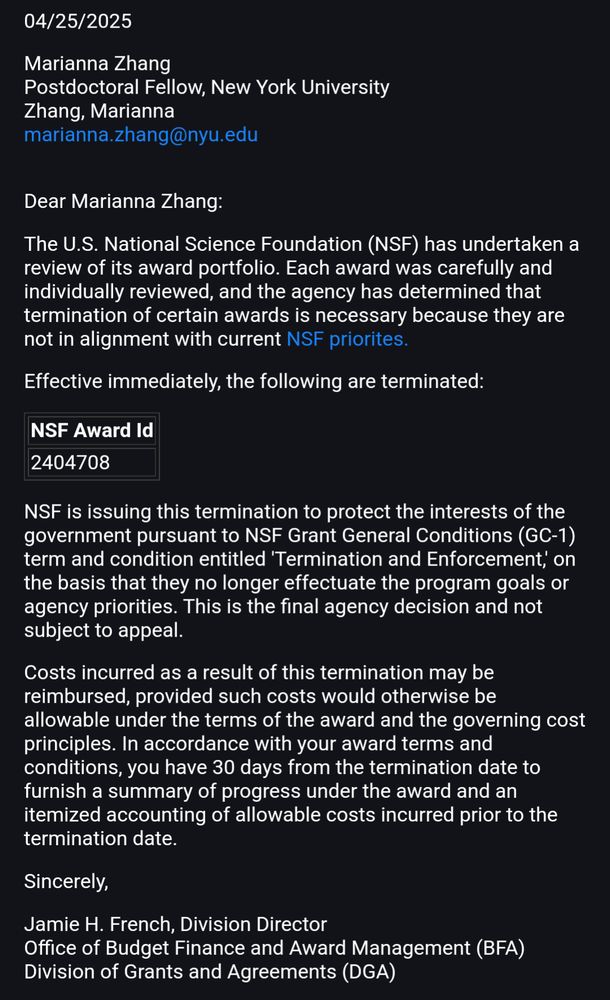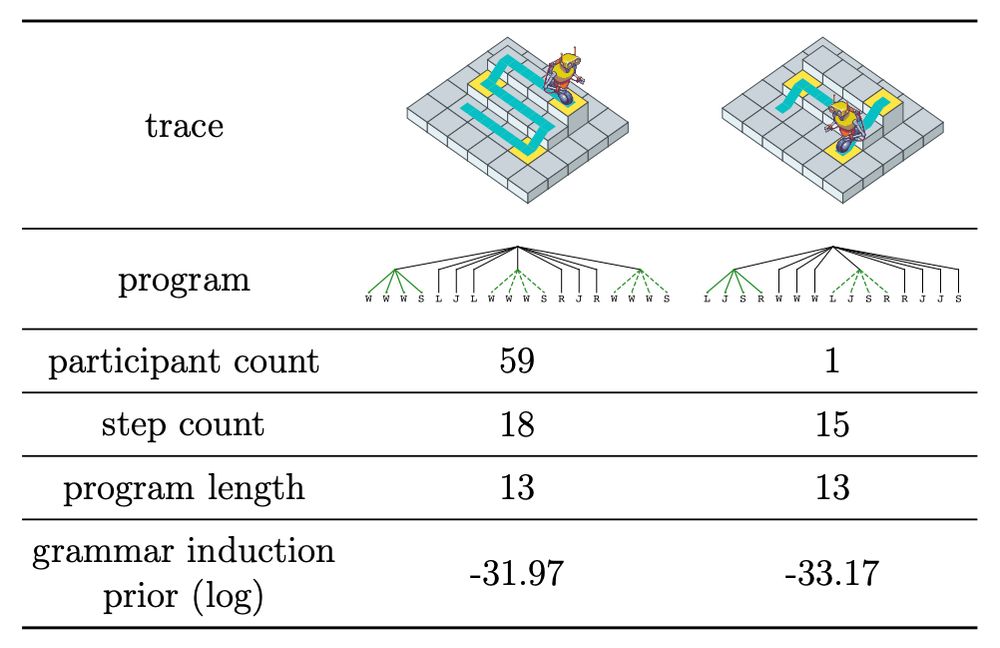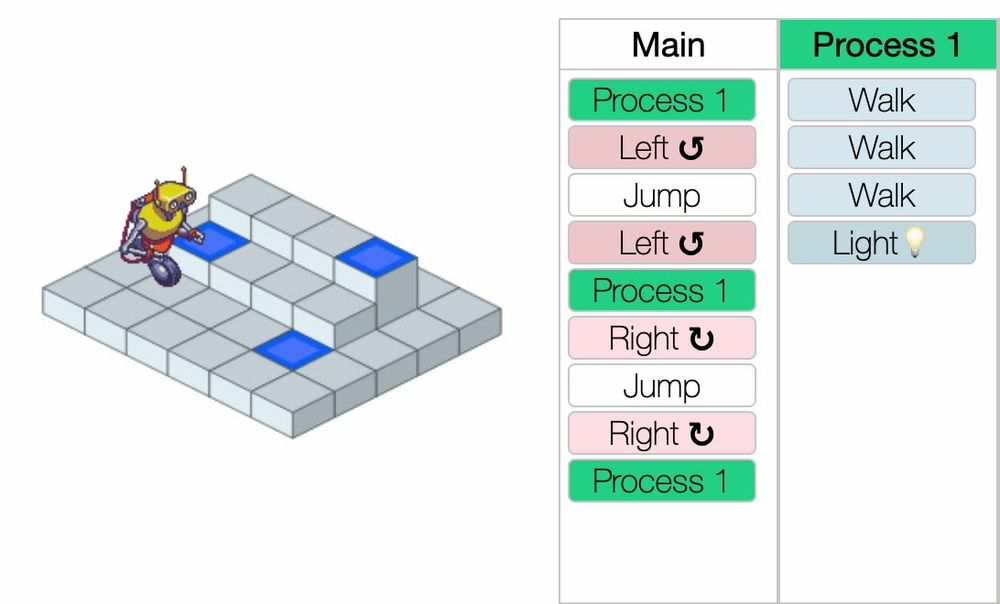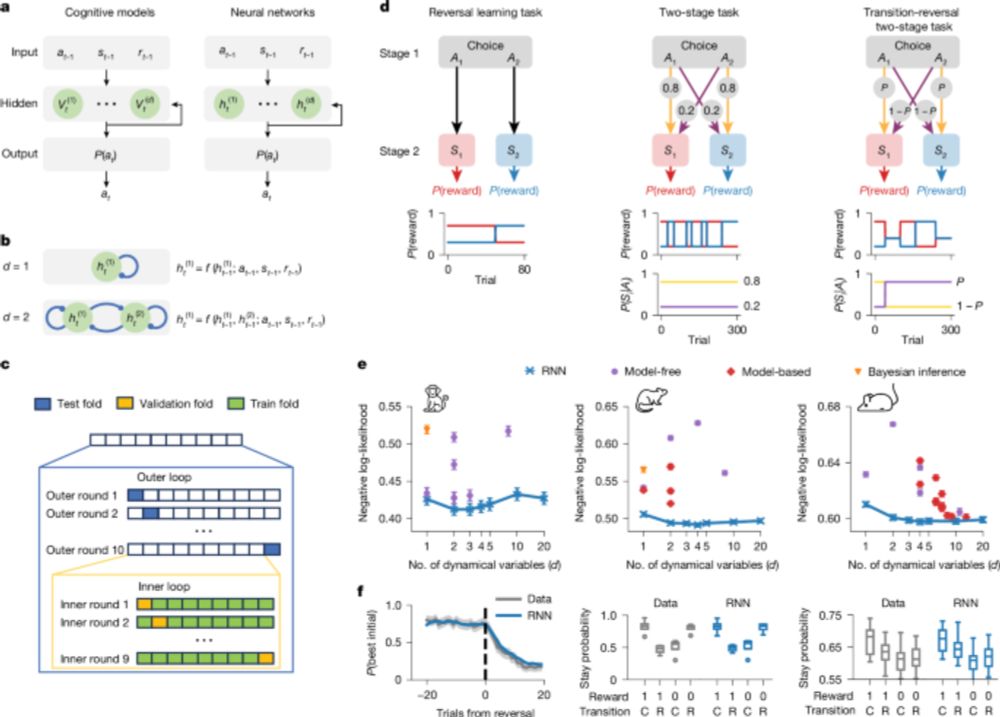I’m excited to share my recent preprint on a neural network model of free recall that learns multiple memory strategies including the memory palace!
www.biorxiv.org/content/10.1...
21.10.2025 03:36 — 👍 31 🔁 16 💬 1 📌 2
seems that RFK is clearing the path for his CDC to do tuskegee syphillis experiments as a matter of course. in other news, RFK is a genuine monster who relishes in the pain and suffering of those he feels he has control or dominion over
19.10.2025 18:21 — 👍 10452 🔁 3327 💬 191 📌 97
Despite the world being on fire, I can't help but be thrilled to announce that I'll be starting as an Assistant Professor in the Cognitive Science Program at Dartmouth in Fall '26. I'll be recruiting grad students this upcoming cycle—get in touch if you're interested!
07.05.2025 22:08 — 👍 142 🔁 24 💬 17 📌 4

email starting, "The U.S. National Science Foundation (NSF) has undertaken a review of its award portfolio. Each award was carefully and individually reviewed, and the agency has determined that termination of certain awards is necessary because they are not in alignment with current NSF priorites."
yesterday, my postdoc funding (salary and research funds) was cancelled by the National Science Foundation, effective immediately. I received the same generic, vaguely threatening, typo-ridden email as many of my colleagues who have had their awards terminated recently. (1/n)
26.04.2025 12:24 — 👍 605 🔁 276 💬 41 📌 28
You already know the Ship of Theseus, but do you also know the Ship of Thesis? It was constructed out of 3 loosely related papers which tell the tales of heroic quests and mythic psychodrama. It was only constructed once and then allowed to sink into oblivion.
31.03.2025 18:10 — 👍 60 🔁 8 💬 0 📌 0
One neat direction I've heard of is @psychboyh.bsky.social & Robert Wilson's work using LLMs to process think-aloud data. 2024.ccneuro.org/pdf/67_Paper...
05.12.2024 12:41 — 👍 15 🔁 1 💬 2 📌 0
Shout out to my incredible co-authors: Sophia Sanborn (@naturecomputes.bsky.social), Mark Ho (@markkho.bsky.social), Fred Callaway (@fredcallaway.bsky.social), Nathaniel Daw (@nathanieldaw.bsky.social), and Tom Griffiths (@cocoscilab.bsky.social).
03.12.2024 15:37 — 👍 5 🔁 1 💬 0 📌 0
Check out our preprint thread for more details!
bsky.app/profile/did:...
03.12.2024 15:37 — 👍 5 🔁 0 💬 1 📌 0

My paper on hierarchical plans is out in Cognition!🎉
tldr: We ask participants to generate hierarchical plans in a programming game. People prefer to reuse beyond what standard accounts predict, which we formalize as induction of a grammar over actions.
authors.elsevier.com/a/1kBQr2Hx2x...
03.12.2024 15:37 — 👍 100 🔁 37 💬 1 📌 3
Lightbot was originally built by Danny Yaroslavski. We build on an open-source version by Laurent Haan (github.com/haan/Lightbot).
Animation in first post was inspired by M. C. Escher’s Ascending and Descending and the game Monument Valley.
7/7
13.02.2024 16:38 — 👍 3 🔁 0 💬 0 📌 0
Huge thanks to my incredible co-authors: Sophia Sanborn, @markkho.bsky.social, @fredcallaway.bsky.social, @nathanieldaw.bsky.social, & @cocoscilab.bsky.social. I am incredibly grateful for their insights and support!
6/7
13.02.2024 16:36 — 👍 5 🔁 0 💬 1 📌 0
For more details, check out the paper!
Preprint: arxiv.org/abs/2311.18644
Playable demo: carlos.correa.me/cocosci-ligh...
Experiment code: github.com/cgc/cocosci-...
Analysis code: github.com/cgc/lightbot...
5/7
13.02.2024 16:35 — 👍 4 🔁 1 💬 1 📌 0

We find that people have a bias towards reuse, beyond the reuse that naturally occurs when minimizing program length. Drawing from theories of word learning, we account for this by modeling participants' program-writing as if they were creating & using an action grammar.
4/7
13.02.2024 16:33 — 👍 5 🔁 0 💬 1 📌 0

Importantly, a program isn't just a sequence of instructions. Participants can define and use parts of programs (called processes), making it possible to write shorter, more compact programs.
3/7
13.02.2024 16:33 — 👍 4 🔁 0 💬 1 📌 0

We use a process-tracing paradigm where people create hierarchical plans. Based on the educational game Lightbot, research participants drag and drop instructions to write programs. Lightbot follows these instructions, with the goal of activating all lights.
2/7
13.02.2024 16:32 — 👍 3 🔁 0 💬 1 📌 0
Note: This thread is a repost from X (formerly twitter): twitter.com/_cgcorrea/st... The thread over there has several animations, which are only stills here.
1.5/7
13.02.2024 16:32 — 👍 3 🔁 0 💬 1 📌 0


Human behavior is hierarchically structured. But what determines *which* hierarchies people use? In a preprint, we run an experiment where people create programs that correspond to hierarchies, finding that people prefer structures with more reuse.
arxiv.org/abs/2311.18644
1/7
13.02.2024 16:30 — 👍 23 🔁 7 💬 1 📌 3
Explainability, Computer Vision, Neuro-AI.🪴 Kempner Fellow @Harvard.
Prev. PhD @Brown, @Google, @GoPro. Crêpe lover.
📍 Boston | 🔗 thomasfel.me
software imagineering™ riichi mahjong 🀅 kidney donor
seattle ∞ https://tarng.com
Motor Control and Motor Learning
Physics PhD, now exploring questions involving learning and decision-making. Postdoc at NYU. Curious and open to chats.
|| assistant prof at University of Montreal || leading the systems neuroscience and AI lab (SNAIL: https://www.snailab.ca/) 🐌 || associate academic member of Mila (Quebec AI Institute) || #NeuroAI || vision and learning in brains and machines
I’m not like the other Bayesians. I’m different.
Thinks about philosophy of science, AI ethics, machine learning, models, & metascience. postdoc @ Princeton.
Machine learning & statistics researcher @ Flatiron Institute. Posts on probabilistic ML, Bayesian statistics, decision making, and AI/ML for science.
www.dianacai.com
MSc Student in NeuroAI @ McGill & Mila
w/ Blake Richards & Shahab Bakhtiari
assistant professor of psychology at USC丨he/him丨semiprofessional dungeon master丨https://snastase.github.io/
Sir Henry Wellcome Postdoctoral Fellow @ Max Planck UCL.
PhD Student in Cognition & Perception at @nyu.edu @hartleylabnyu.bsky.social
third-year phd student at jhu psych | perception + cognition
https://talboger.github.io/
www.blazgracar.com/letibus
Workworkwork out now!
Game designer of LOK, LOK Digital, Abdec, Workworkwork, Herd, All Is Bomb // Making music for theatre, keyboardist, electronic producer as Blaž // Some other stuff as well
Language processing - Neuroscience - Machine Learning - Assistant Professor at Stanford University - She/Her - 🏳️🌈
Studying speech using intracranial recordings and EEG. Opinions my own.
Cognitive neuroscientist (Assistant Professor at NYU), human episodic memory, M/EEG, ECoG, and behavior. How do we reinstate temporally dynamic, information-rich memories?
professor at university of washington and founder at csm.ai. computational cognitive scientist. working on social and artificial intelligence and alignment.
http://faculty.washington.edu/maxkw/
learning | neuroethology | basal ganglia | birdsong | decision-making | natural history | Current K99 Postdoc Rich Mooney @Duke | PhD Christina Gremel @UC San Diego
2nd year computational neuro PhD student at Boston University (advisors Cynthia Bradham & Gabe Ocker)
Mathematically modeling embryonic neurodevelopment
I write trippy scifi & mathfiction.
Ignyte Award Finalist 2025
6 stories in Clarkesworld
26 yrs old
PI of the https://imaginerealitylab.org/ @uclbrainscience.bsky.social where we investigate the neural and computational mechanisms of mental imagery and reality monitoring. Activist about mental health and EDI in academia. She/her.







